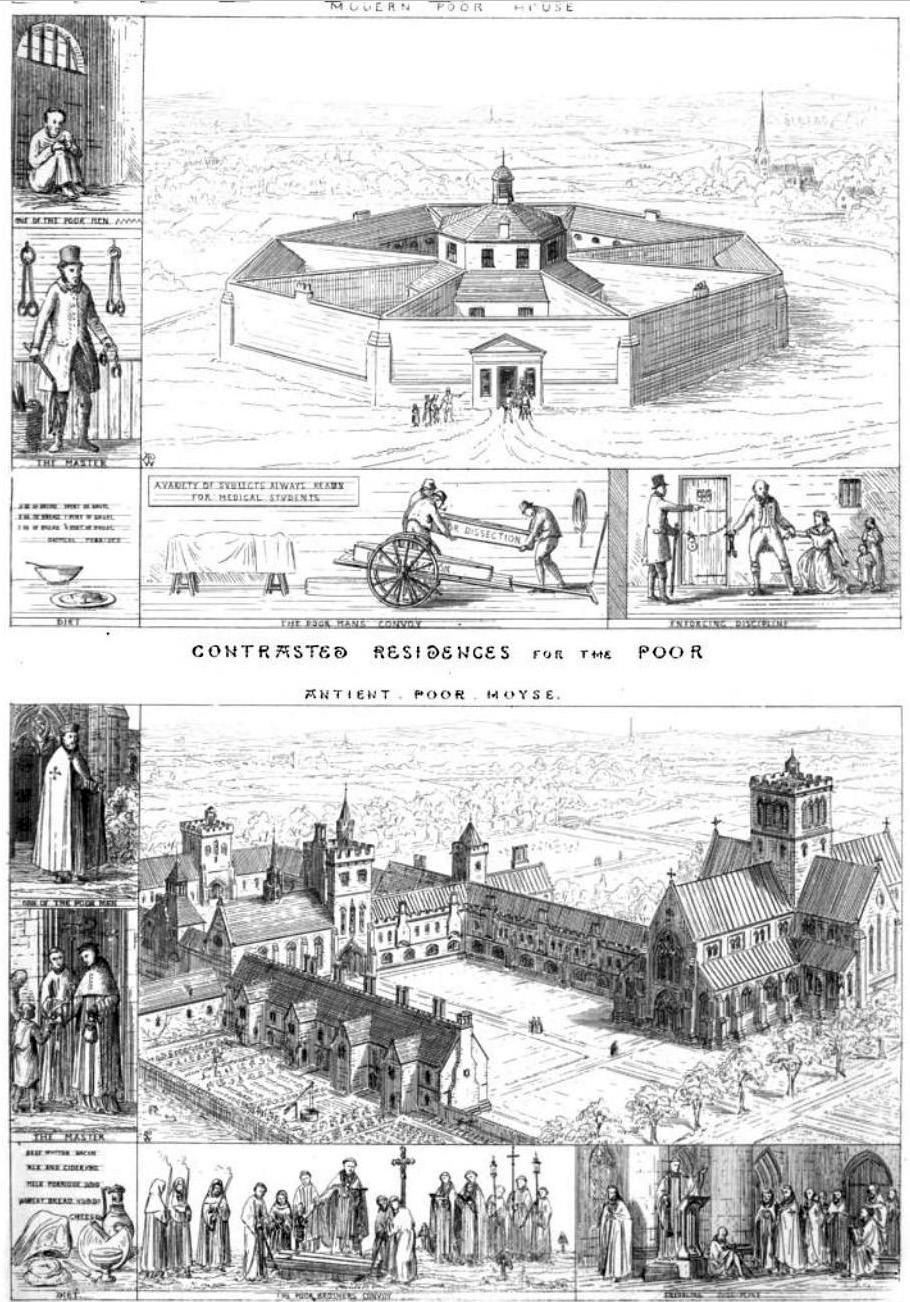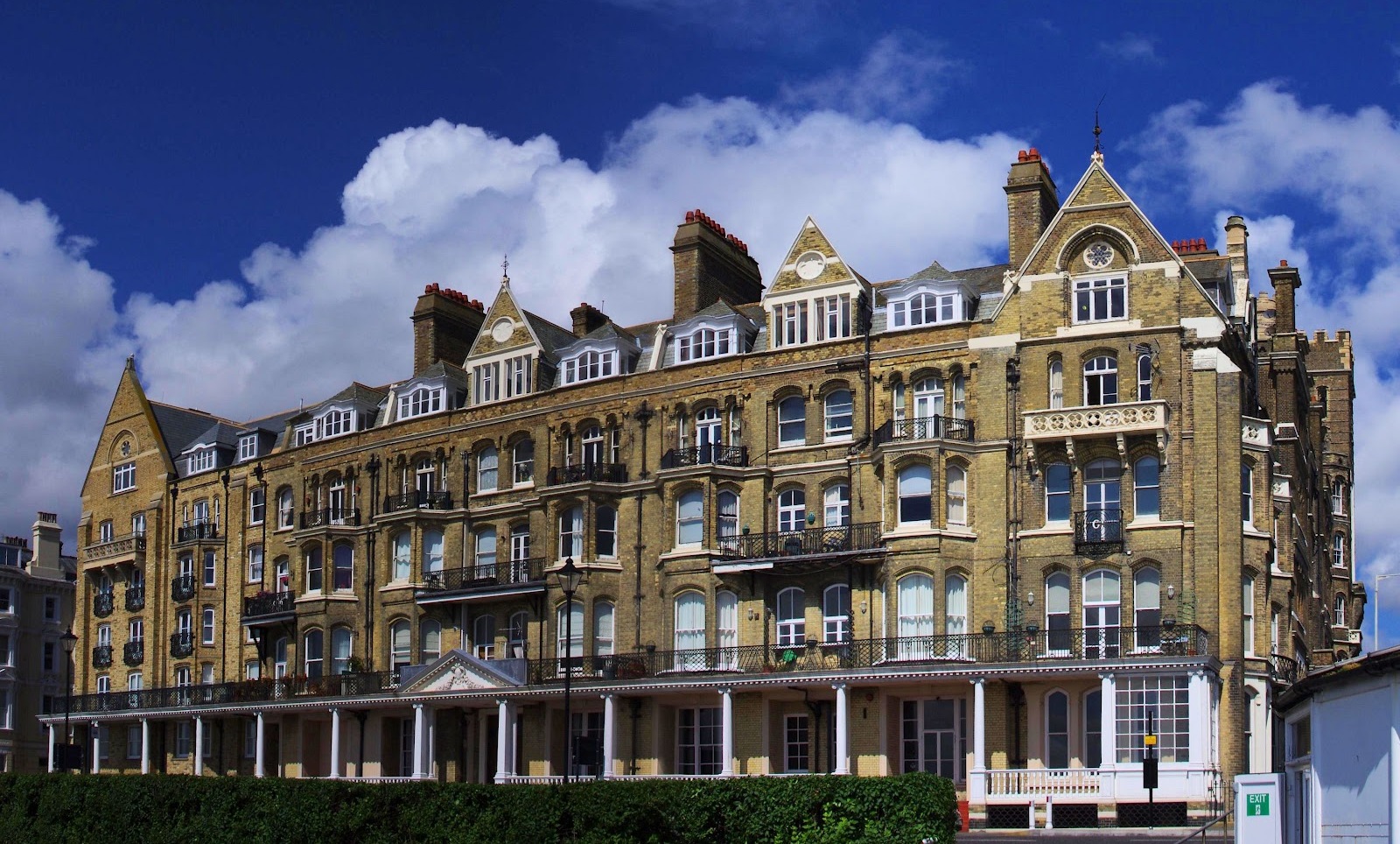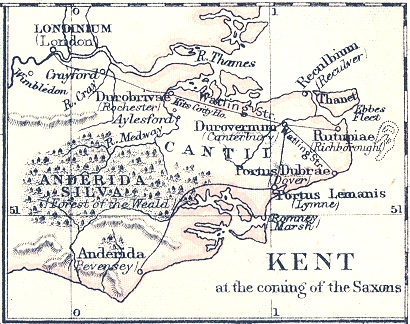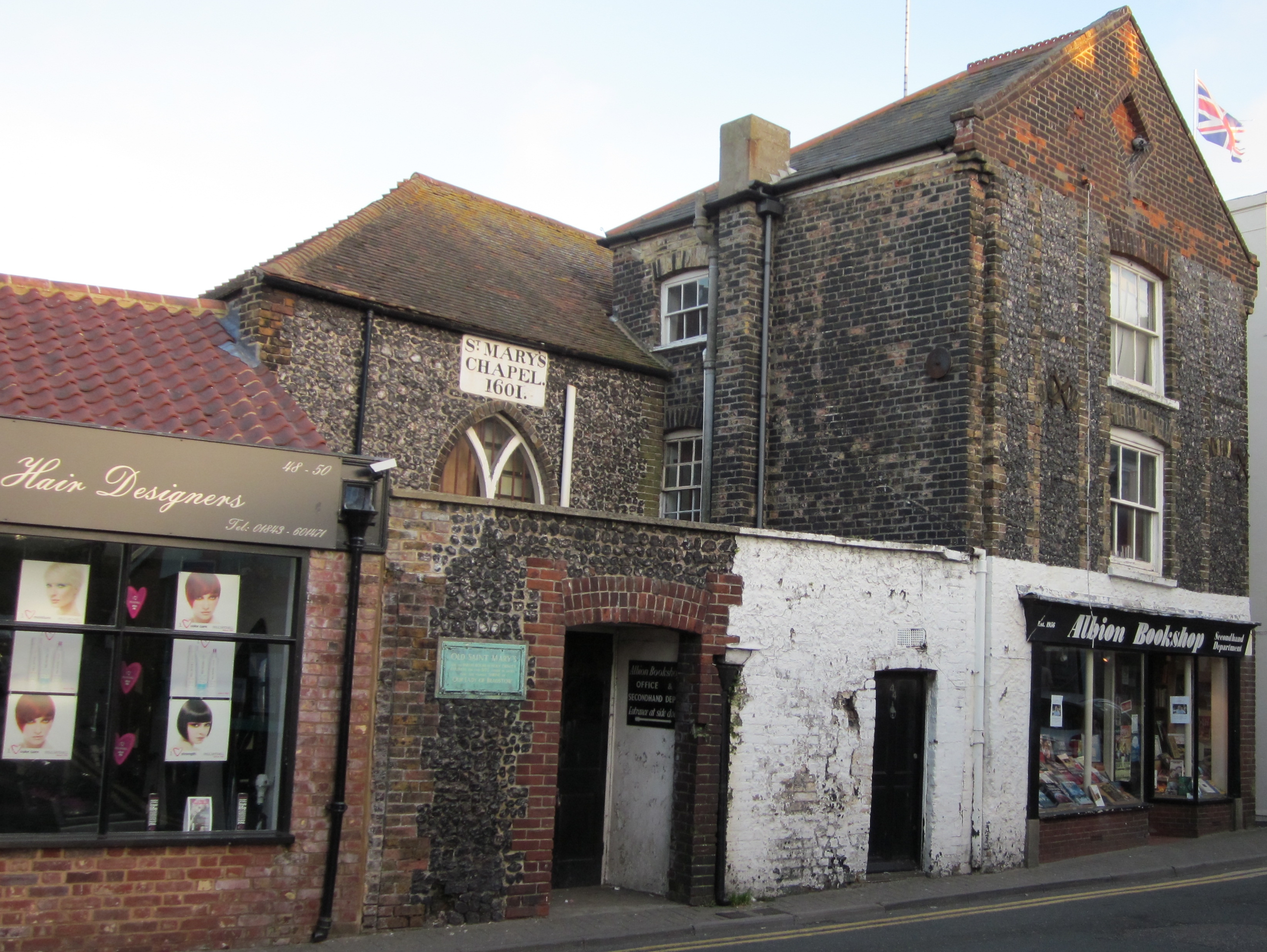|
Ramsgate
Ramsgate is a seaside resort, seaside town and civil parish in the district of Thanet District, Thanet in eastern Kent, England. It was one of the great English seaside towns of the 19th century. In 2021 it had a population of 42,027. Ramsgate's main attraction is its coastline, and its main industries are tourism and fishing. The town has one of the largest marinas on the English south coast, and the Port of Ramsgate provided cross-English Channel, channel ferries for many years. History Ramsgate began as a fishing and farming hamlet. The Christian missionary Augustine of Canterbury, St Augustine, sent by Pope Gregory I, Pope Gregory the Great, landed near Ramsgate in AD 597. The town is home to the Pugin's Church and Shrine of St Augustine, Shrine of St Augustine. The earliest reference to the town is in the Kent Hundred Rolls of 1274–5, both as ''Remmesgate'' (in the local personal name of 'Christina de Remmesgate') and as ''Remisgat'' (with reference to the town). The ... [...More Info...] [...Related Items...] OR: [Wikipedia] [Google] [Baidu] |
Port Of Ramsgate
The Port of Ramsgate (also known as Port Ramsgate, Ramsgate Harbour, and Royal Harbour, Ramsgate) is a harbour situated in Ramsgate, south-east England, serving cross-Channel freight traffic and smaller working and pleasure craft. It is owned and operated by Thanet District Council. History The construction of Ramsgate Harbour began in 1749, and was completed in about 1850. The two most influential architects of the harbour were father and son John Shaw and John Shaw Jr, who designed the clock house, the obelisk, the lighthouse and the Jacob's Ladder steps. The harbour has the unique distinction of being the only harbour in the United Kingdom awarded the right to call itself a Royal Harbour. This was bestowed by King George IV after he was taken by the hospitality shown by the people of Ramsgate when he used the harbour to depart and return with the Royal Yacht Squadron in 1821. In 2024 the harbour was designated a Heritage Harbour. Because of its proximity to mainland Euro ... [...More Info...] [...Related Items...] OR: [Wikipedia] [Google] [Baidu] |
Pugin's Church And Shrine Of St Augustine
St Augustine's Church or the Shrine of St Augustine of Canterbury is a Roman Catholic church in Ramsgate, Kent. It was the personal church of Augustus Pugin, a nineteenth-century architect, designer, and reformer. The church is an example of Pugin's design ideas, and it forms a central part of Pugin's collection of buildings in Ramsgate. Having built his home (The Grange, Ramsgate, next door), Pugin began work on St Augustine's in 1846 and worked on it until his death in 1852. His sons completed many of the designs. This is the site where Pugin is buried, in a vault beneath the chantry chapel he designed, alongside several members of his family. History St Augustine brought Christianity to the English for the first time in AD 597, landing very close to the site of St Augustine's. After his death (c.604), his tomb soon became a shrine. This shrine, which was enlarged and moved over the centuries, was destroyed under the orders of King Henry VIII and Thomas Cromwell in 1538, an ... [...More Info...] [...Related Items...] OR: [Wikipedia] [Google] [Baidu] |
Ramsgate Sands
''Ramsgate Sands'', also known as ''Life at the Seaside'', is an oil-on-canvas painting by the English artist William Powell Frith, who worked on it from 1851 to 1854. The painting, which depicts a beach scene in Ramsgate, was Frith's first great commercial success: it was exhibited at the Royal Academy summer exhibition in 1854, and bought by Queen Victoria. Frith made a series of similar pictures, showing groups of people in contemporary scenes, including ''The Derby Day'' of 1858, ''The Railway Station'' of 1862, and '' Private View at the Royal Academy'' of 1883. Background After the South Eastern Railway reached Ramsgate Town railway station in 1846, the town of Ramsgate rapidly became a popular destination for day trips from London. Frith was already a successful artist. He became a member of the Royal Academy in 1853, and the painting was based on studies made by Frith during a holiday in Ramsgate in September 1851, where he was inspired by the variety of everyday life ... [...More Info...] [...Related Items...] OR: [Wikipedia] [Google] [Baidu] |
St Augustine's Abbey Ramsgate
St Augustine's Abbey or Ramsgate Abbey is a former Benedictine abbey in Ramsgate. It was built in 1860 by Augustus Pugin and is a Grade II listed building. It was the first Benedictine monastery to be built in England since the Reformation. In 2010, the monks moved to St Augustine's Abbey in Chilworth, Surrey. The site is now owned by the Vincentian Congregation from Kerala, India. The church of St Augustine, across the road from the abbey site, belongs to the Archdiocese of Southwark and is a shrine of St Augustine of Canterbury. History Augustus Pugin had built his home, The Grange, in Ramsgate, and St Augustine's Church next door. He donated the church to the Catholic Diocese of Southwark before his death in 1852, and The Grange remained in private hands. In 1856, the Bishop of Southwark, Thomas Grant, invited the Subiaco Cassinese Congregation of the Benedictines to form a monastic community in Kent and take over the running of the church. The abbey was built ac ... [...More Info...] [...Related Items...] OR: [Wikipedia] [Google] [Baidu] |
A W Pugin
Augustus Welby Northmore Pugin ( ; 1 March 1812 – 14 September 1852) was an English architect, designer, artist and critic with French and Swiss origins. He is principally remembered for his pioneering role in the Gothic Revival style of architecture. His work culminated in designing the interior of the Palace of Westminster in Westminster, London, and its clock tower, the Elizabeth Tower (formerly St. Stephen's Tower), which houses the bell known as Big Ben. Pugin designed many churches in England, and some in Ireland and Australia. He was the son of Auguste Pugin, and the father of Edward Welby Pugin, Cuthbert Welby Pugin, and Peter Paul Pugin, who continued his architectural and interior design firm as Pugin & Pugin. Biography Pugin was the son of the French draughtsman Auguste Pugin, who had immigrated to England as a result of the French Revolution and had married Catherine Welby of the Welby family of Denton, Lincolnshire, England. Pugin was born on 1 M ... [...More Info...] [...Related Items...] OR: [Wikipedia] [Google] [Baidu] |
The Granville Hotel, Ramsgate
The Granville Hotel, Ramsgate, Kent, on the southeast coast of England, is a former hotel designed by Edward Welby Pugin, son of Augustus Pugin. Built in 1867 as a terrace of eight houses, The Granville was a hotel between 1869 and 1946 before being sold by proprietors Spiers & Pond. The building is now Granville House, a private residence containing 48 self-contained flats that are managed by the leaseholders. History After the death of Augusta Emma d'Este (Lady Truro) on 21 May 1866, the remainder of the land from the Mount Albion Estate was sold off to developers. Business partners Robert Sankey, John Barnet Hodgson and teh architect Edward Welby Pugin purchased a plot of land on Ramsgate's east cliff for £9,250. In 1867, they built an eight-house terrace in the Gothic style. These were substantial properties, with four floors and a basement, and each had a private entrance. The houses were marketed as exclusive villas, to be let for weeks at a time to wealthy visitors to Ra ... [...More Info...] [...Related Items...] OR: [Wikipedia] [Google] [Baidu] |
Isle Of Thanet
The Isle of Thanet () is a peninsula forming the easternmost part of Kent, England. While in the past it was separated from the mainland by the Wantsum Channel, it is no longer an island. Archaeological remains testify to its settlement in ancient times. Today, it is a tourist destination, and has an active agricultural base. Etymology The island of Thanet is mentioned as ''Tonetic'' (c. AD 150; the TON- of this form was misread as TOΛI-, hence it appears as ''Toliatis'' in the surviving manuscripts of Ptolemy); ''Tanat's'', ''Athanatos'' and ''Thanatos'' (in various copies of 3rd C AD, Solinus); ''Tanatos'' (AD 731); ''Tenid'' in 679 and ''Tenet'' (e.g. charters of AD 679, 689 and thereafter); and the Old Welsh forms ''Tanet'' and ''Danet'', found in the ''Historia Brittonum'' (c. AD 829/30) and Armes Prydein (c. AD 930). Standard reference works for English place-names (such as Eilert Ekwall's ''Concise Oxford Dictionary of English Place-Names'') state the name ''Tane ... [...More Info...] [...Related Items...] OR: [Wikipedia] [Google] [Baidu] |
The Grange, Ramsgate
The Grange, Ramsgate, Kent, on the coast of southern England was designed by the Victorian architect and designer Augustus Pugin for himself. Built between 1843 and 1844, in the Gothic Revival style, Pugin intended it both as a home and as a manifesto for his architectural philosophy. Rescued from demolition by the Landmark Trust in 1997, the Grange is a Grade I listed building. History Pugin bought the land for the site at West Cliff, Ramsgate, in 1841. The house was built between 1843 and 1844 by the builder George Myers. Pugin's second wife died in 1844 and it was only after his third marriage to Jane Knill in 1848 that it became a family home. The interior of the house was finally completed in 1850. It is built from the inside out in the sense that the layout of the rooms was considered before the outside of the building. This is in contrast to the Georgian style that preceded it. The style was influential on subsequent English architecture designed by architects like Edwin Lut ... [...More Info...] [...Related Items...] OR: [Wikipedia] [Google] [Baidu] |
Margate
Margate is a seaside resort, seaside town in the Thanet District of Kent, England. It is located on the north coast of Kent and covers an area of long, north-east of Canterbury and includes Cliftonville, Garlinge, Palm Bay, UK, Palm Bay and Westbrook, Kent, Westbrook. In 2011 it had a population of 61,223. The town has been a significant maritime port since the Middle Ages, and was associated with Dover as part of the Cinque Ports in the 15th century. It became a popular place for holidaymakers in the 18th century, owing to easy access via the Thames, and later with the arrival of the railways. Popular landmarks include the sandy beaches and the Dreamland Margate, Dreamland amusement park. During the late 20th century, the town went into decline along with other British seaside resorts, but attempts are being made to revitalise the economy. History Margate was listed in the Domesday Book of 1086 as lying within the hundred of Thanet and the county of Kent. Margate was rec ... [...More Info...] [...Related Items...] OR: [Wikipedia] [Google] [Baidu] |
Broadstairs
Broadstairs () is a coastal town on the Isle of Thanet in the Thanet district of east Kent, England, about east of London. It is part of the civil parish of Broadstairs and St Peter's, which includes St Peter's, and had a population in 2011 of about 25,000. Situated between Margate and Ramsgate, Broadstairs is one of Thanet's seaside resorts, known as the "jewel in Thanet's crown". The town's coat of arms' Latin motto is ''Stella Maris'' (" Star of the Sea"). The name derives from a former flight of steps in the chalk cliff, which led from the sands up to the 11th-century shrine of St Mary on the cliff's summit. The town spreads from Haine Road in the west to Kingsgate (named after the landing of King Charles II in 1683), a hamlet in St Peter parish in the north, and to Dumpton in the south (named after the yeoman Dudeman who farmed there in the 13th century). The hamlet of Reading (formerly ''Reden'' or ''Redyng'') Street was established by Flemish refugees in the 17th ... [...More Info...] [...Related Items...] OR: [Wikipedia] [Google] [Baidu] |
Kent
Kent is a Ceremonial counties of England, ceremonial county in South East England. It is bordered by Essex across the Thames Estuary to the north, the Strait of Dover to the south-east, East Sussex to the south-west, Surrey to the west, and Greater London to the north-west. The county town is Maidstone. The county has an area of and had population of 1,875,893 in 2022, making it the Ceremonial counties of England#Lieutenancy areas since 1997, fifth most populous county in England. The north of the county contains a conurbation which includes the towns of Chatham, Kent, Chatham, Gillingham, Kent, Gillingham, and Rochester, Kent, Rochester. Other large towns are Maidstone and Ashford, Kent, Ashford, and the City of Canterbury, borough of Canterbury holds City status in the United Kingdom, city status. For local government purposes Kent consists of a non-metropolitan county, with twelve districts, and the unitary authority area of Medway. The county historically included south-ea ... [...More Info...] [...Related Items...] OR: [Wikipedia] [Google] [Baidu] |
Cinque Ports
The confederation of Cinque Ports ( ) is a historic group of coastal towns in south-east England – predominantly in Kent and Sussex, with one outlier (Brightlingsea) in Essex. The name is Old French, meaning "five harbours", and alludes to the original five members (Hastings, New Romney, Hythe, Kent, Hythe, Dover and Sandwich, Kent, Sandwich). At its peak in the Late Middle Ages, the confederation included over 40 members. There is now a total of 14 members: five "head ports", two "ancient towns" and seven "limbs". The confederation was originally formed for military and trade purposes, but is now entirely ceremonial. The ports lie on the western shore of the English Channel, where the crossing to the European continent is narrowest. Inhabitants of the Cinque Ports are called ''Portsmen''. Origins The origins of the confederation are obscure, but are believed to lie in the late History of Anglo-Saxon England, Anglo-Saxon period, and specifically in the reign of Edward the ... [...More Info...] [...Related Items...] OR: [Wikipedia] [Google] [Baidu] |





